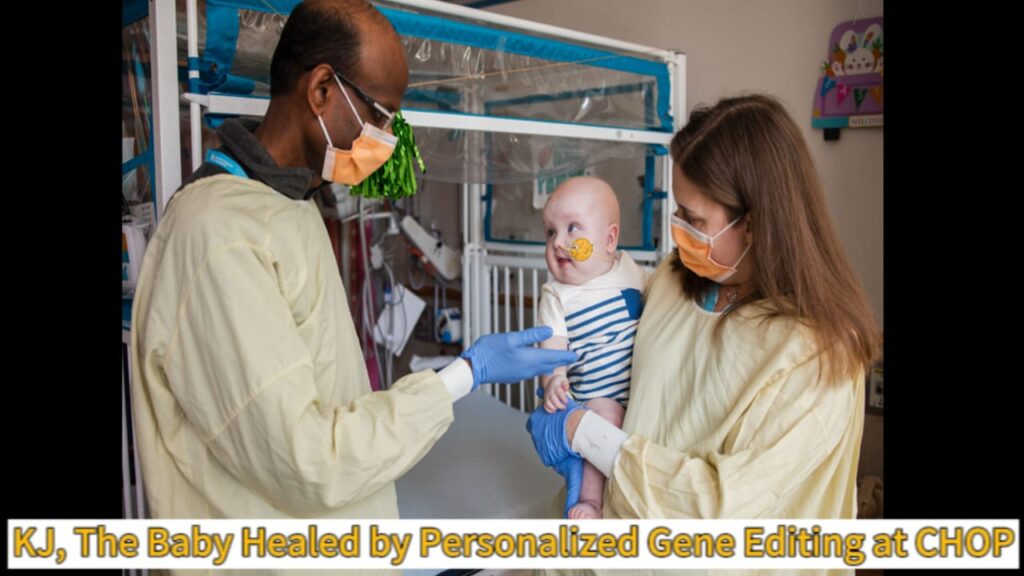KJ, a baby born with an ultra-rare genetic condition known as CPS-1 deficiency, has become the first human in history to be cured using a personalized gene editing therapy, according to a breaking report from the New York Times. The condition, which affects roughly one in 1.3 million births, severely impairs the body’s ability to process ammonia — posing fatal risks to the liver, brain, and other organs.
KJ was treated at the Children’s Hospital of Philadelphia in collaboration with the University of Pennsylvania, where researchers engineered a customized genetic correction specific to his DNA. This unprecedented development is being heralded as a once-in-a-century scientific leap, with experts calling it the dawn of a new era in precision medicine.
Rewriting Human Genetics: The Rise of Precision DNA Medicine
KJ received multiple doses of gene editing therapy designed precisely for his mutated CPS1 gene, using enhanced CRISPR-Cas9 tools wrapped in lipid nanoparticles. This allowed targeted delivery into his liver cells, correcting the underlying genetic defect at a molecular level — a feat previously thought to be beyond current science.
KJ’s body responded with astonishing efficiency. Post-treatment scans and metabolic tests have shown normalized ammonia levels and liver function, suggesting the therapy did more than mitigate — it effectively reversed the disease. This places KJ at the epicenter of a revolution that may redefine what it means to “cure” a genetic disorder.
Hope or Hype? Medical Ethicists Sound Alarms Over Customized Genome Intervention
KJ’s apparent recovery, while extraordinary, has ignited a cascade of ethical questions. Medical ethicists are now urging caution, warning that personalized genome interventions could widen the healthcare inequality gap if such therapies remain unaffordable for the general population.
KJ’s case sets a compelling but controversial precedent. As private biotech firms race to patent similar treatments, critics worry about future misuse, including non-therapeutic enhancements or germline editing. While regulators monitor the case closely, the debate over the morality and accessibility of such medical miracles is far from settled.
Global Reaction: Scientists and Leaders Applaud Milestone in Genetic Medicine

KJ’s story has reverberated around the world, drawing praise from scientists, bioengineers, and even political leaders. Nobel laureates in genetics have called it “a staggering example of medical ingenuity,” while the World Health Organization issued a congratulatory statement alongside a call for global policy frameworks.
KJ’s case is already being studied internationally, from research centers in Singapore to genomics hubs in Berlin. This single successful treatment has mobilized the global scientific community, uniting them in cautious optimism and an urgent desire to ensure this breakthrough is not a one-off, but a repeatable, scalable model for rare diseases.
Behind the Scenes: How a Team of 40 Scientists Rewrote Medical History
KJ’s survival is the result of an intense scientific operation involving over 40 researchers who worked in synchronization across genetics, pediatrics, biochemistry, and computational biology. Thousands of simulations were run to identify the safest and most effective editing pathway for his genome.
KJ’s dosing schedule was calibrated down to the millisecond, with each vial of therapy crafted using custom formulations. It was not only a technical marvel but an emotional journey for the team, many of whom confessed that KJ became more than a patient — he became the symbol of what science can accomplish when it refuses to surrender to the impossible.
What Comes Next? The Commercial and Ethical Fallout of Gene Editing Success
KJ’s case now stands at the center of a brewing commercial storm. Pharma and biotech investors are scrambling to replicate the success, and analysts predict an explosion in bespoke gene therapy markets. The treatment could be the prototype for tackling complex disorders — from Huntington’s disease to rare metabolic syndromes.
KJ’s miracle, however, also brings high-stakes ethical dilemmas. Who will own the intellectual property? Will the therapy be accessible or priced into exclusivity? Can regulators keep up with the pace of discovery? As KJ thrives, the world watches — inspired by the possibilities, but wary of a future where life-saving cures may become luxury commodities.














